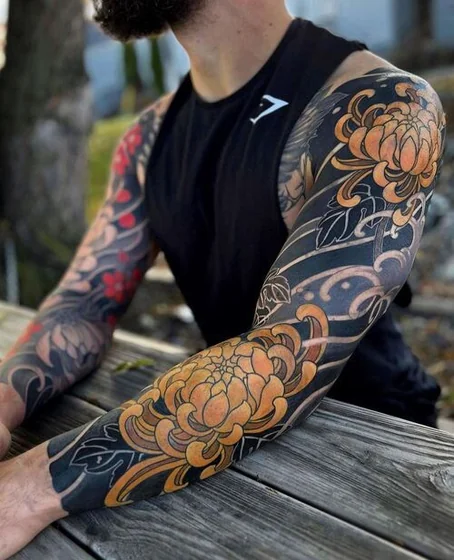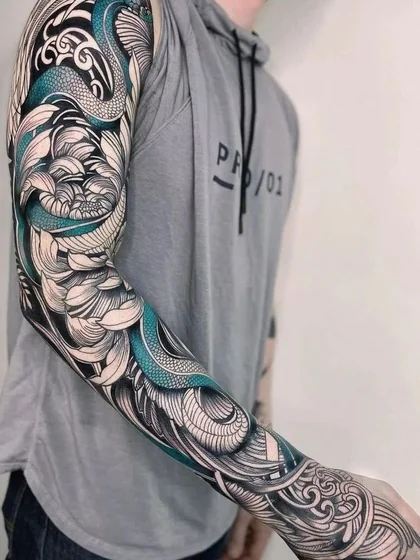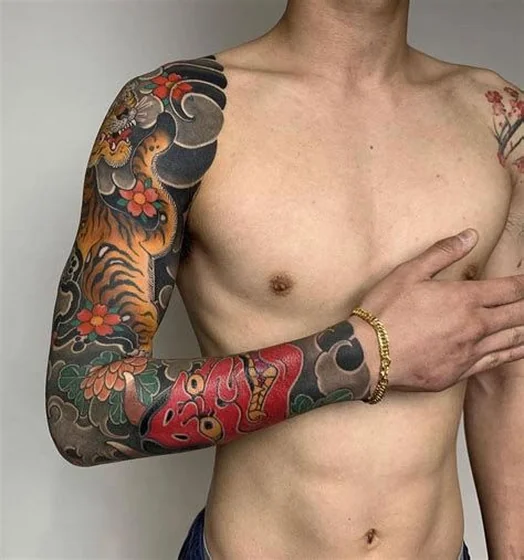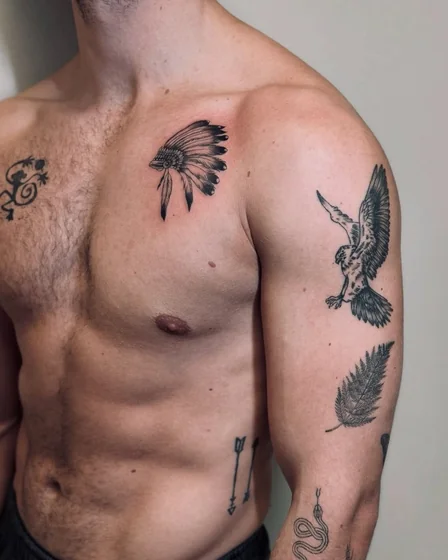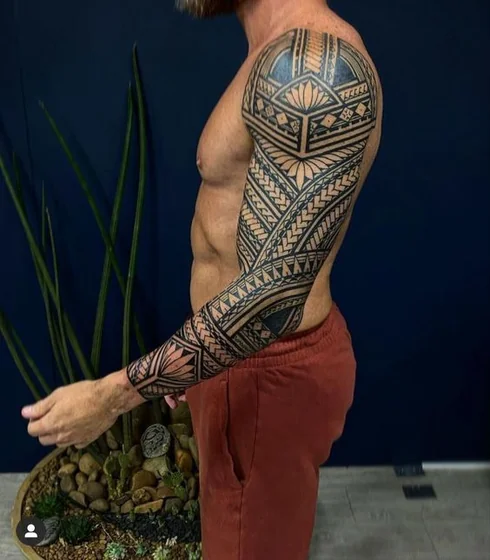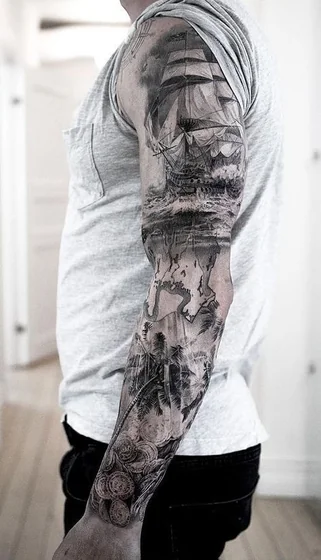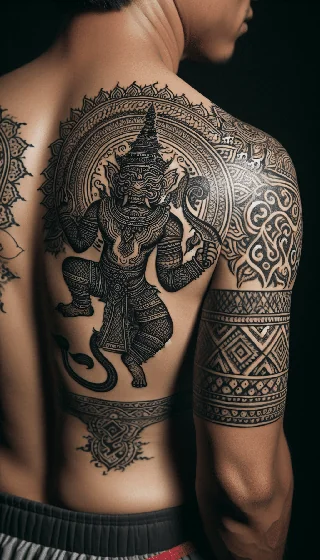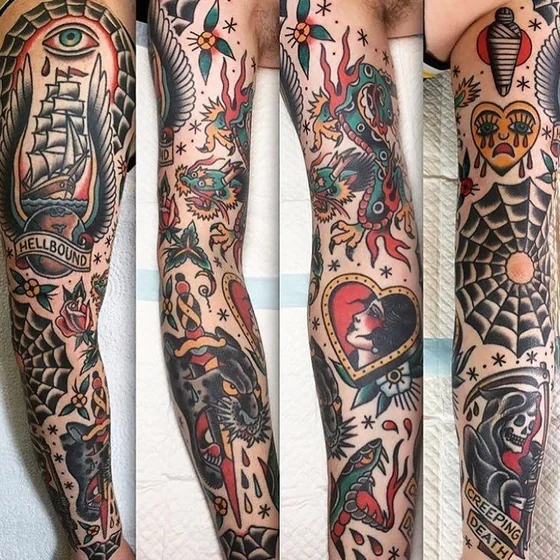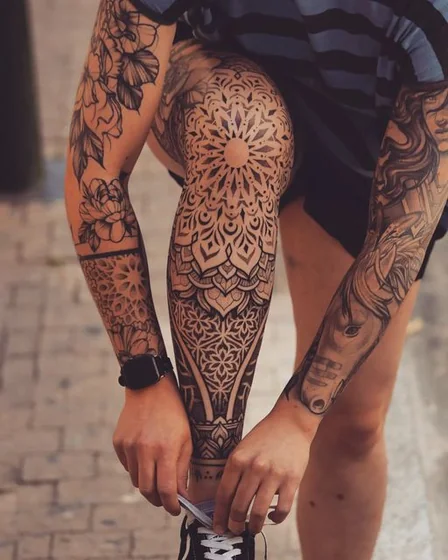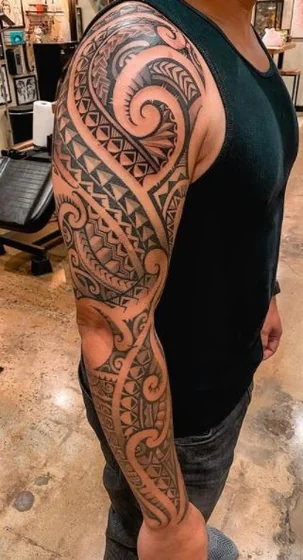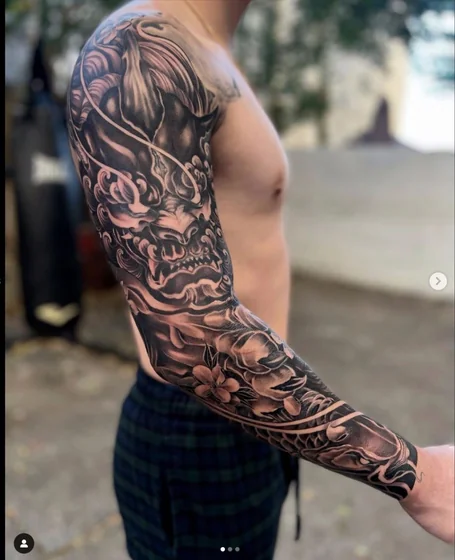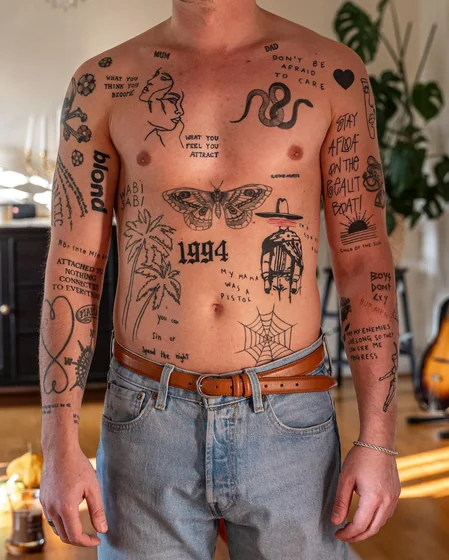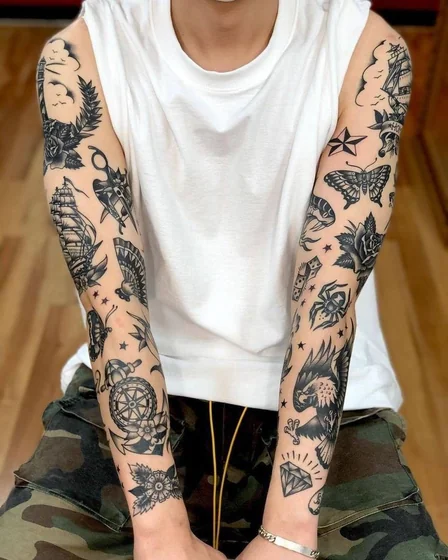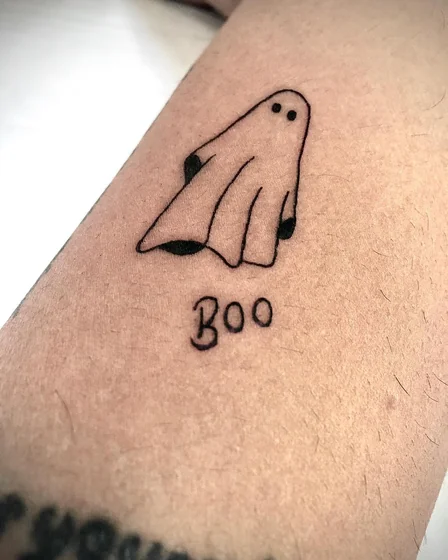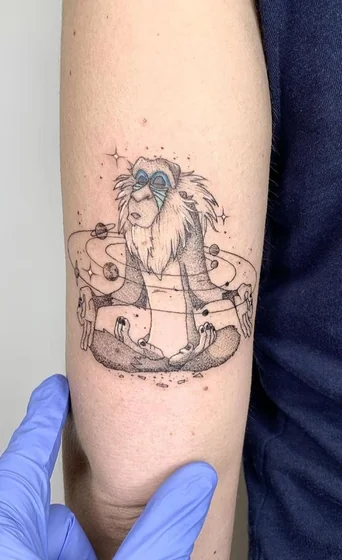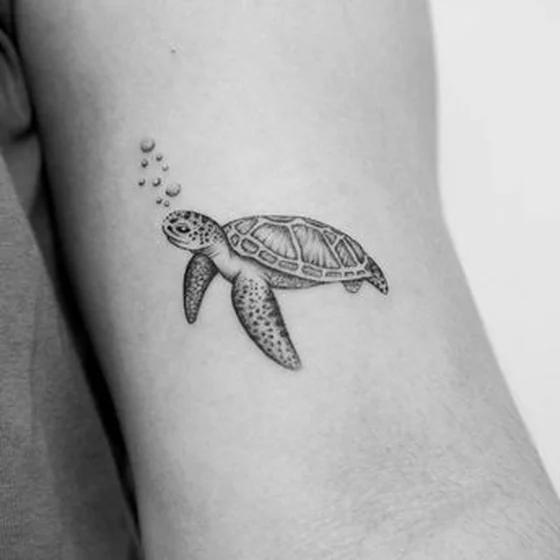Filters
Tattoo Ideas
3D Virtual Try-On
Stop guessing. See exactly how your tattoo will look on your body. Upload your design, and visualize it instantly.
- Realistic 3D skin simulation
- Multiple body positions
- Upload your own design
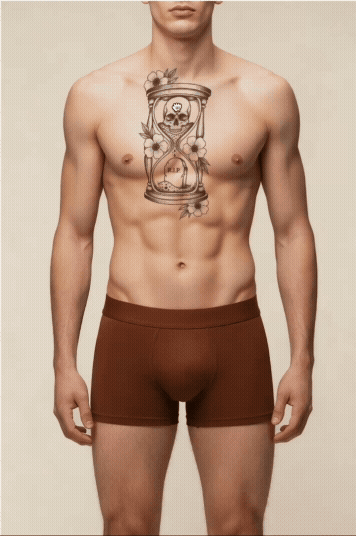
What Your Placement Choice Reveals About Your Priorities
Forearm ink makes immediate statements during handshakes, business meetings, and casual conversations. This high-visibility real estate suits confident guys comfortable with their work displaying prominently. Upper placements signal strategic thinking—you control when and how you reveal your ink, maintaining professional flexibility while expressing personal identity.
Full coverage demonstrates commitment and artistic vision. Wrapping your entire limb shows you've moved beyond tentative experimentation into deliberate self-expression. Partial designs reveal measured approach—you're building something meaningful rather than rushing into maximum coverage.
Masculine Design Elements That Actually Resonate
Tribal patterns connect you to warrior heritage through bold black lines and geometric precision. These timeless pieces emphasize strength without requiring color maintenance. Biomechanical concepts transform your limb into living machinery, particularly striking on athletic builds where muscle definition sells the mechanical illusion.
Realistic portraits honor important figures—fathers, mentors, historical leaders who shaped your worldview. Wildlife realism channels specific attributes: wolves embody loyalty and pack mentality, eagles represent freedom and vision, bears symbolize protective strength. Religious and spiritual imagery grounds you in faith traditions providing moral frameworks.
Geometric and sacred patterns appeal to analytical minds appreciating mathematical precision and structural beauty. These intellectually satisfying designs age exceptionally well, maintaining crisp edges and visual impact decades after application.
Strategic Placement for Career Advancement
Corporate environments demand careful visibility management. Upper bicep and shoulder regions hide completely under dress shirts and suits, letting you maintain conservative professional presentation while carrying personal significance underneath. Rolling up sleeves reveals your ink deliberately during appropriate moments—team building events, casual Fridays, after-hours networking.
Trade and skilled labor careers embrace visible ink more readily. Construction, mechanics, culinary arts, and similar fields rarely penalize forearm pieces. Many guys in these industries use their ink as conversation starters building client relationships and crew camaraderie.
Entrepreneurs and creatives enjoy maximum flexibility. Your personal brand might actually benefit from distinctive ink that makes you memorable in crowded markets. Consider how your designs align with your business identity and target audience expectations.
Optimizing Designs for Your Physical Build
Muscular frames demand bold imagery that pops during flexing. High-contrast blackwork, thick tribal bands, and dramatic biomechanical elements create dynamic visual effects when your muscles engage. Detailed pieces positioned along muscle group lines—bicep peaks, forearm muscle separation—use your natural definition as compositional elements.
Leaner builds benefit from vertical compositions adding perceived mass through strategic line placement. Climbing designs starting at wrists and flowing toward shoulders create length and visual interest. Wraparound pieces utilizing full circumference make slender limbs appear more substantial.
Stockier, broader frames excel with panoramic scenes and complex multi-element compositions. Your width becomes advantage when designs need substantial space for proper execution. Consider how strong shoulder connections can extend your design into adjacent zones.
Why Some Guys Explore Traditionally Feminine Approaches
Curious about softer aesthetics? Check out graceful alternatives for women emphasizing delicate line work and flowing compositions. Some masculine designs benefit from incorporating traditionally feminine elements—watercolor techniques adding emotional depth to warrior portraits, or floral backgrounds softening aggressive imagery while maintaining powerful core themes.
Color Strategy: When to Use It and When to Skip It
Black-and-grey delivers timeless masculinity requiring minimal maintenance. These monochromatic pieces age gracefully, needing touch-ups every 7-10 years compared to color work's 3-5 year cycles. Conservative professional environments accept black ink more readily than vibrant colors that draw attention.
Color adds dimension and emotional resonance when used strategically. Accent colors highlighting key elements—red in flags or roses, blue in water or sky elements—create focal points without overwhelming compositions. Full-color realism showcases technical artistry and artistic commitment, though it demands strict sun protection and regular maintenance.
Your skin tone affects color saturation. Lighter complexions display vibrant hues easily, while darker skin tones require careful color selection and expert application achieving desired visibility. Consult artists experienced with your specific skin tone before committing to color-heavy designs.
Pain Reality Check: What Different Zones Actually Feel Like
Outer bicep and shoulder cap areas rate lowest on pain scales—dull pressure most guys handle easily during 3-4 hour sessions. Forearm outer surfaces create moderate stinging sensations, manageable but noticeable throughout application.
Inner bicep and elbow ditch zones test your mettle. Sharp, burning pain in these nerve-dense areas pushes many guys to request frequent breaks. Inner forearm delivers intense sensations less severe than elbow regions but definitely challenging. Plan accordingly—schedule painful zones when you're mentally fresh and well-rested.
Your pain tolerance connects directly to mental preparation and session pacing. Guys who research the process thoroughly, understand what's coming, and communicate openly with artists handle even difficult zones successfully. Those who underestimate the challenge or try powering through without breaks often have negative experiences affecting their perception of the entire process.
Session Strategy: Maximizing Your Time and Tolerance
First appointments establish outlines and major elements. Artists work efficiently during these foundation sessions, covering substantial ground before your body fatigues. Second and third sessions add shading, color, and detail work requiring precision but moving slower than initial outlines.
Schedule 3-4 hour blocks rather than marathon sessions. Your pain tolerance and artist's precision both decline after four hours as physical and mental fatigue accumulate. Multiple shorter sessions produce better results than single exhausting marathons.
Spacing sessions 3-4 weeks apart allows complete healing between appointments. Rushing back before full recovery risks ink quality and increases infection chances. Use healing periods planning your next session elements and building anticipation rather than viewing gaps as frustrating delays.
Gym Considerations: Protecting Your Investment
Fresh ink demands 2-3 week workout breaks. Sweat introduces bacteria into open wounds, while muscle flexing and stretching stress healing skin potentially causing blowouts or color loss. Upper body work particularly impacts healing—bench presses, pull-ups, and shoulder exercises directly stress affected areas.
Return gradually after clearance. Start with lower body focus and light cardio, slowly reintroducing upper body work as your skin fully regenerates. Plan your ink timeline around training cycles if you compete or follow structured programs—schedule pieces during planned deload weeks or off-seasons.
Long-term maintenance requires consistent sun protection during outdoor training. UV exposure fades ink rapidly—apply SPF 50+ before outdoor runs, hikes, or sports. Reapply every two hours during extended exposure maintaining your investment's vibrancy.
Workplace Navigation: Reading Your Environment Accurately
Company policies tell partial stories. Official handbooks might prohibit visible ink while actual enforcement proves lax, or vice versa. Observe leadership and successful colleagues—their appearance choices reveal real cultural norms beyond written policies.
Client-facing roles demand extra caution. Even ink-friendly companies may expect conservative presentation during important pitches or executive meetings. Upper placements you can easily cover provide career insurance while maintaining personal expression.
Having tough conversations upfront prevents future conflicts. Discuss visible ink plans with managers before committing to forearm or hand pieces. Understanding potential career implications doesn't mean abandoning your vision—it means making informed decisions aligning your personal and professional priorities.
Evolution Planning: Building Your Collection Strategically
Standalone pieces should either work beautifully alone or accommodate natural expansion. Starting with isolated bicep designs limits future options unless you're comfortable with patchwork aesthetics. Beginning with forearm foundations allows organic progression toward elbow and shoulder connections.
Thematic consistency creates intentional collections rather than random accumulations. Stick with complementary styles—Japanese traditional plus geometric patterns, or realistic wildlife plus nature backgrounds. Mixing drastically different styles without unifying elements produces chaotic results that cheapen individual pieces' impact.
Discuss long-term vision during initial consultations even when starting small. Quality artists help you establish frameworks accommodating future additions without awkward spacing or compositional conflicts.
